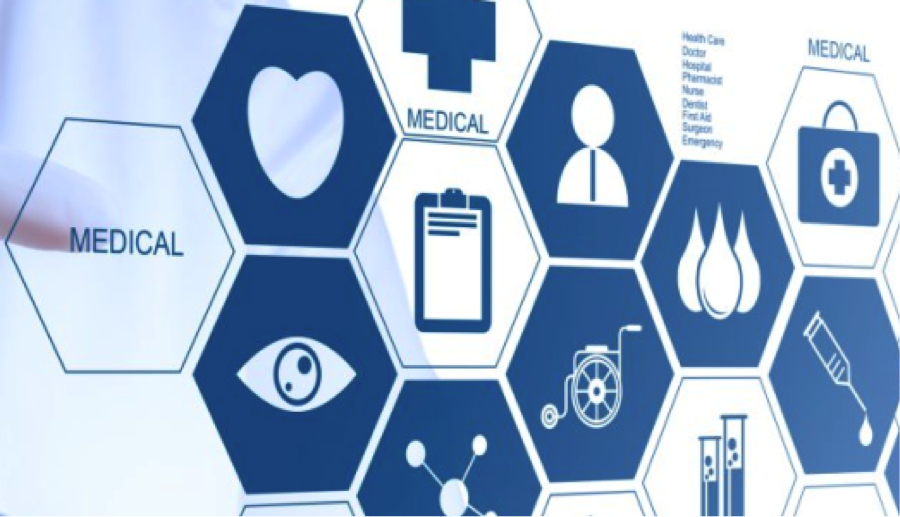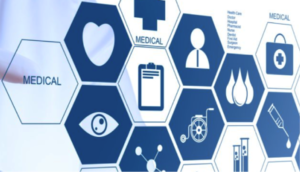
Disruptive Potential of IoT in Healthcare

Overview
The healthcare industry in the United States is a prime target for disruption due to its enormous size and projections of its continued growth:
The country spent $3.4 trillion on health care in 2016, a number that is projected to grow to $5.5 trillion by 2025. The study, by the Centers for Medicare and Medicaid Services, projects that the average growth in health spending will be even faster between 2016 and 2025, at 5.6 percent per year, driven by inflation in the cost of medical services and products and an aging population.[1]
One technology that may drive that disruption is IoT, with its potential to reduce costs through automation, improve asset tracking, improve process controls and extend healthcare outside of the hospital. An IDC study in April this year found that 39% of healthcare provider organizations were piloting or in production with IoT initiatives. The same study found:
73.3% of providers and 84% of payers report that they are prepared or very prepared for participating in the IoT in healthcare, with the majority of respondents reporting IoT is or will be mainstream by 2017.[2]
IoT in the Hospital
There are many current and future uses of IoT (also known as telemedicine, telehealth and connected health) in the hospital. Some of the current applications of IoT in this setting are:
- RFID tracking of assets
- Temperature and environment monitoring of lab samples
- Remote patient monitoring
- Smart pharmacy management
- Tracking location of staff and patients in a hospital
While each of these applications can provide tactical benefits, connecting them may enable important new advantages. Consider the following scenario:
The nurse who is in the room pushes a heart attack alarm button. A message goes to the nearest heart attack team based on the nurse and the team’s actual location within the hospital (RTLS infrastructure). Elevators get re-allocated to the floors where the heart attack team is located (building applications). The light in the patient room is turned on and shades closed (building applications). The nurse gets an estimated time of arrival of the heart attack team. The digital sign on the patient room door changes color and a note is automatically made in the patient journal (clinical system — EHR). The location of the necessary medical equipment is brought to the attention of the relevant personnel (medical application and RTLS.)
The nurse uses sensors, such as a patch, which she places on the patient, and the relevant data is transmitted to the flat screen in the patient room, as well as to the tablets and smartphones of the heart attack team.[3]
Connecting smart devices throughout the hospital can not only provide automation, but may save lives as well. In addition, organizations could process data collected by these smart devices through machine learning models to detect anomalies or identify opportunities for improvement.
IoT for Home Healthcare
Another setting where IoT can significantly improve healthcare is the home. There is a growing trend of ‘aging in place’, where aging individuals and their families prefer to provide needed assistance at home rather than in an assisted-living facility or rest home. IoT devices can facilitate this type of care while enabling privacy and independence for both the aging individual and their caregivers. A recent Wired article shares some examples of how this is being done today:
Wearable devices and home health monitoring devices assisting patients is a common thing now. Chatty medical devices are extremely appealing for patients of any age range. The devices are capable enough to transmit vital sign data from a patient home to the hospital staff. It allows them to have a real time monitoring of patient’s health. These devices use wirelessly connected glucometers, scales, heart rate and blood pressure monitors.[4]
Potential for Disruption
The growing number of older people in the United States, along with the rapid rise in healthcare costs and the advent of IoT and supporting technologies make healthcare an industry that is ready for major innovation. While these technologies are currently being deployed for tactical purposes, the opportunity exists to create interoperable platforms to create major disruption.
References
[1] Carolyn Y. Johnson, “Why America’s health-care spending is projected to soar over the next decade”, The Washington Post, 2/15/2017, www.washingtonpost.com/news/wonk/wp/2017/02/15/u-s-health-care-spending-projected-to-soar-to-5-5-trillion-by-2025/
[2] Lynne D. Dunbrack, “IDC Survey: The Internet of Things – Connecting the Health Ecosystem”, April 2017, http://www.idc.com/getdoc.jsp?containerId=CA40226015
[3] Jonas Knudsen, “Business Strategy: Internet of Things for Healthcare: European Market Overview”, IDC Health Insights, September 2016, http://www.idc.com/research/view_lof.jsp?containerId=EMEA40530416
[4] Nile Lars, “Connected Medical Devices, Apps: Are They Leading the IoT Revolution – or Vice Versa?”, www.wired.com/insights/2014/06/connected-medical-devices-apps-leading-iot-revolution-vice-versa/
Users who have LIKED this post:
5 comments on “Disruptive Potential of IoT in Healthcare”
Comments are closed.


A well written article, Eldon!
The use of IoT in healthcare is inevitable in the coming years. It can help streamline medical checkups and hospital processes. This will improve resource efficiency and reduce wait times for patients in serious situations. It also allows for better communication between doctors, hospital staff and patients as mentioned in the article. The integration of IoT sensors should be discreet and effective at the same time. In addition, the staff should be trained to use them beforehand to reap the full benefits of these systems. I can see it work extremely well in developing nations if it can be integrated into the present IT infrastructures in hospitals without significant capital costs. Embedded systems in medical equipment can help with maintenance and predict downtimes too. In the long run this can help avoid failures during emergencies, reduce costs for hospitals and increase productivity of doctors. However, a new business model is needed which involves all important stakeholders in the healthcare sector to work together and fully utilise the potential of IoT in healthcare.
Users who have LIKED this comment:
Thanks, Rahul. I really like your comments, especially the one about needing a new business model to accelerate this change. Currently, there is a somewhat adversarial relationship between payers (government and insurance), providers (doctors and hospitals) and patients, which contributes to some of the ways the healthcare industry in the U.S. is broken. Michael Porter, from Harvard Business School, suggested pivoting toward value based healthcare (https://hbr.org/2013/10/the-strategy-that-will-fix-health-care) to remedy this problem. Doing so would help align economic incentives between the major players in healthcare. The accountable care model that is growing in popularity across the nation is a step in that direction. I don’t know if it is sufficient (due to the emotional nature of healthcare and other factors), but I think it is helping. Accountable care organizations (ACOs) are incentivized to drive both quality of outcomes and efficiency of operations in their organizations. I believe ACOs will be the main adopters of new technologies like IoT. I think they will help set new standards and force other players to follow or be left behind.
Hey Eldon,
Great post. IoT will have a immense impact on the healthcare systems around the world no doubt about it There is no question about the impact of big data and IoT connected devices in the healthcare industry. Besides monitoring one’s condition change, big data and IoT devices can predict a possible disease he or she may get in the future as well. I guess this is why early-adopters have been passionate about tracking their personal health/work-out data using the smart devices like Fitbit for the last years.
Thanks for your comments, Christian. It will really be interesting to see how companies process data from fitness IoT devices like Fitbit and incorporate it in care plans!
Great article Eldon, thank you.
As a potential consumer, I’m very excited about the impact of IoT on aging in place. Both of my parents are very independent and live a flight away, and I’m optimistic that IoT will help them retain their independence as they get older.